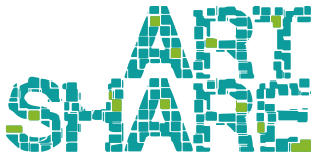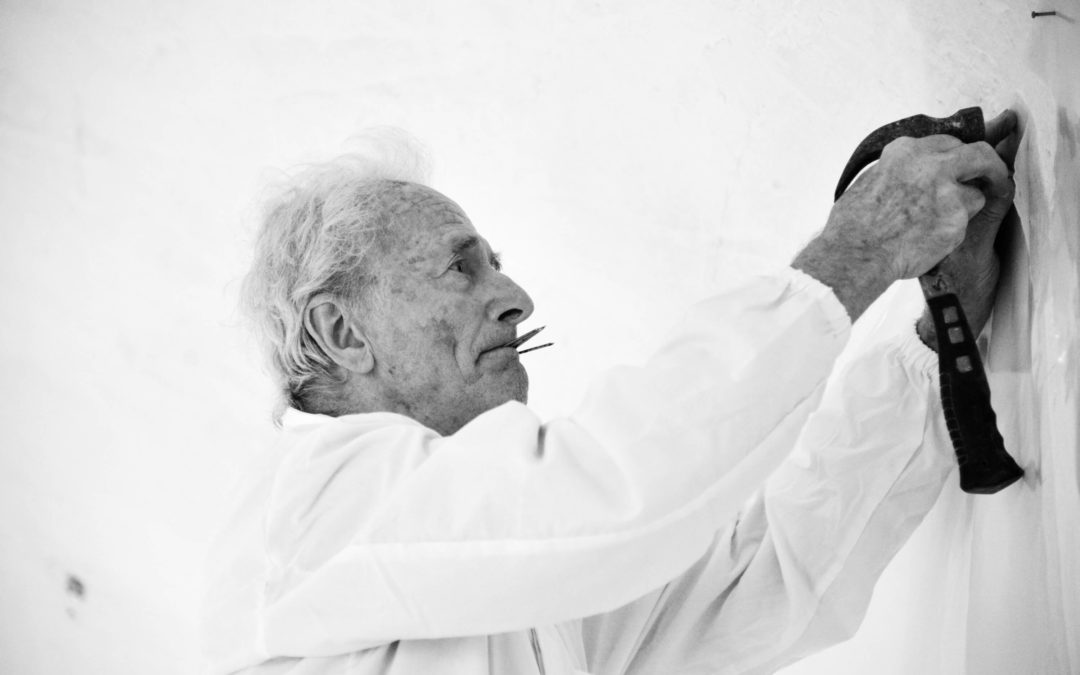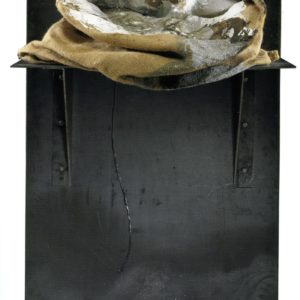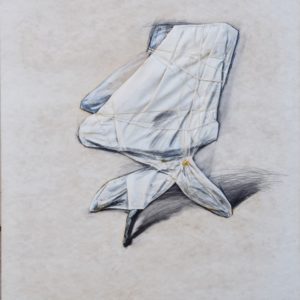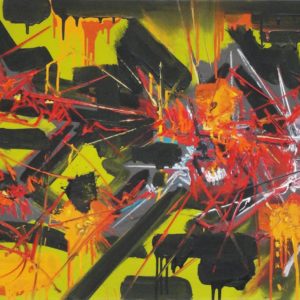Icaro Paolo
Pietro Paolo Chissotti, alias Paolo Icaro, was born in Turin in 1936. He took part in the initial shows of Arte Povera (Arte Povera e Im-Spazio, Galleria La Bertesca, Genoa, 1967; Arte Povera più Azioni Povere, Arsenali of Amalfi, 1968) and in the large exhibitions which marked the epoch-making transition of style to installation and conceptual art (When Attitudes Become Forms, Kunsthalle Bern, curated by Harald Szeemann), but his work has developed fairly independently of any group or movement. While in his early career he mainly worked with terracotta, later the materials of his works became more varied, as did the forms. With metal he made cages which occupied space, or threadlike curves, but at other times ready-mades (found objects) were at the basis of his work. In Amalfi, in the famous Arte Povera show, he took a spatula and plaster and adjusted a chipped corner of a building: a minimal action which owed more to ethics than aesthetics. It was during the ‘sixties when he was in the United States, where he spent long periods of his life, that he began to use plaster. A minor, poor material usually used for intermediate stages of artistic production, but which for him became one of the main materials, because of his interest in the use of chance, represented here by a liquid material which sets immediately. His consecutive applications of plaster with the spatula form lines, frames, columns which are half natural and half artificial, creating an unstable, precarious impression.
The values of Paolo Icaro are not yet very high, but they show a slow upward trend. His consolidated history and the interest on the part of quality galleries give great hopes for an excellent re-evaluation.

